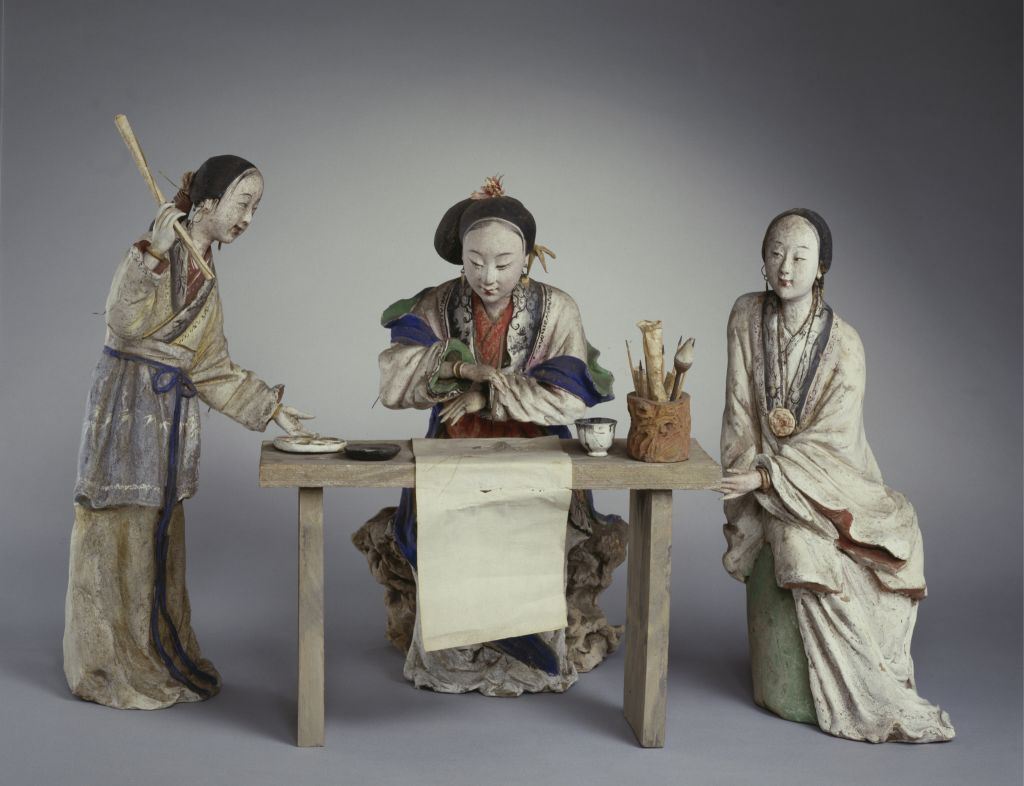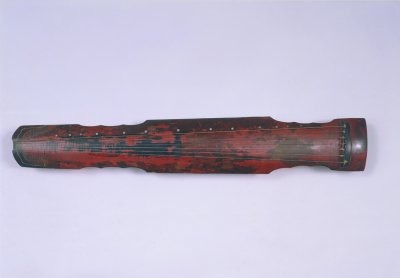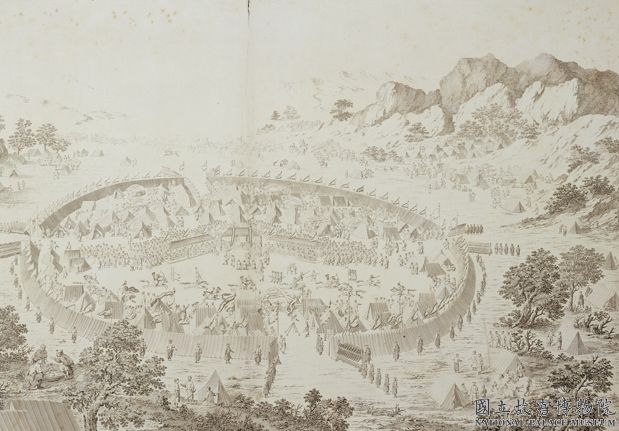[Dong Qichang’s Landscape Atlas]
The Landscape Atlas, Ming Dynasty, Dong Qichang’s paintings, 10 sheets, paper, ink, 21.2 cm vertically and 13 cm horizontally
At the first opening, the picturesque peaks stand out, and the trees in Potuo are surrounded by clouds and smoke. Sign “Xuanzai” and seal “Dong Qichang”. Opposite to the book: “The picture of the white clouds at the Qifeng of the square pot is in Wumen, which is drawn up by the Juvenile scholar. I see it. Qichang.” The seal is “Taishi” and “Dong Qichang”
For the second time, the mountains on both sides of the stream are undulating and the trees are overgrown. Sign “Xuanzai” and seal “Dong Qichang”. Opposite from the book: “Wu Zhonggui is the Taoist of Meihua, and this picture is copied. Qichang.” Seal “Taishi” and “Dong Qichang”
The third is to draw streams, rocks and trees. Sign “Xuanzai” and seal “Dong Qichang”
At the fourth opening, the painting is full of mountains, clouds, houses, cottages and trees. Sign “Xuanzai” and seal “Dong Qichang”. The book opened from the opposite side: “The fallen pine trees are cold in summer, and the picture in Youcheng’s poem is also. Qichang.” The seal is “Taishi” and “Dong Qichang”
At the fifth opening, the picture shows the distant mountains and the winding streams. Sign “Xuanzai” and seal “Dong Qichang”
The sixth opening, painting Yunshan, Xiumu and thatched hut. Sign “Xuanzai” and seal “Dong Qichang”
At the seventh opening, the painting peaks are very steep and the trees are blooming. Sign “Xuanzai” and seal “Dong Qichang”
At the eighth opening, the picture shows the mountains, the trees and the thatched houses. Sign “Xuanzai” and seal “Dong Qichang”
At the ninth opening, the bank slopes of the picturesque river are Tuo, with luxuriant trees and clear mountains. Sign “Xuanzai” and seal “Dong Qichang”
At the tenth opening, you can paint the scene of misty clouds in Xiaoxiang. Sign “Xuanzai” and seal “Dong Qichang”. The book opens from the other side: “The river floats outside the world, and the mountains are in the middle. Dong Qichang imitates Mi Yuanhui.” The seal is “Taishi” and “Dong Qichang”
The title at the back of the volume: “The painter is unrestrained and unrestrained, and does not have to agree with others. It is just naive. If every painting is often called a poem or a scene, it is a common custom. These ten paintings have two or three strong titles, and when they are finished, it is not as good as this. Qichang has its own title of the Wuwu and March Flower Dynasties.” Seal “Dong Qichang”
“Wuwu” is the forty-sixth year of the Wanli period of the Ming Dynasty (1618). The author was 64 years old
Most of the scenes in the book are landscapes, trees and stones. The mountain stones are mostly made of pima chapped, idea chapped, or directly wiped with dry pen chapped and dyed with light ink. The painted peaks are either steep and steep, or vast and remote, or misty, each with its own charm and elegant atmosphere. Dong’s painting of trees has its own unique view. He wrote in his “Essays on Painting Zen Chamber”: “The method of painting trees should focus on turning… If writing is to turn the pen with force, it should not be turned away… But when drawing a foot of tree, it should not be half an inch straight, and the pen should be turned away, which is also the secret.” The painting of trees in this book can best reflect the characteristics of their brushwork and the level of using ink. Some of the tree trunks are written with short lines and double hooks, and some are written vertically by the center, with different height and curvature. The leaves are more abundant, some of them are horizontal, some of them are horizontal, some of them are overlapped with thick and light ink, and some of them are directly drawn into leaves, which fully shows the author’s superb brush and ink skills. Although Dong’s title in the book imitates a certain scene of a certain family, it mainly explains the author’s understanding of the nature of natural mountains and rivers, and describes the spirit in form, the ancient simplicity in the bright ink, and the change in the plain state, reflecting the painter’s own face of “unrestrained and unrestrained” and “naive”.
![图片[1]-Dong Qichang Landscape Atlas-China Archive](https://chinaarchive.net/Ming dynasty/painting/19273.jpg)
![《山水图》册第二开 图片[2]-Dong Qichang Landscape Atlas-China Archive](https://chinaarchive.net/Ming dynasty/painting/19275.jpg) 《山水图》册第二开
《山水图》册第二开![《山水图》册第三开 图片[3]-Dong Qichang Landscape Atlas-China Archive](https://chinaarchive.net/Ming dynasty/painting/19274.jpg) 《山水图》册第三开
《山水图》册第三开![《山水图》册第四开 图片[4]-Dong Qichang Landscape Atlas-China Archive](https://chinaarchive.net/Ming dynasty/painting/19276.jpg) 《山水图》册第四开
《山水图》册第四开![《山水图》册第五开 图片[5]-Dong Qichang Landscape Atlas-China Archive](https://chinaarchive.net/Ming dynasty/painting/19277.jpg) 《山水图》册第五开
《山水图》册第五开![《山水图》册第六开 图片[6]-Dong Qichang Landscape Atlas-China Archive](https://chinaarchive.net/Ming dynasty/painting/19278.jpg) 《山水图》册第六开
《山水图》册第六开![《山水图》册第七开 图片[7]-Dong Qichang Landscape Atlas-China Archive](https://chinaarchive.net/Ming dynasty/painting/19279.jpg) 《山水图》册第七开
《山水图》册第七开![《山水图》册第八开 图片[8]-Dong Qichang Landscape Atlas-China Archive](https://chinaarchive.net/Ming dynasty/painting/19280.jpg) 《山水图》册第八开
《山水图》册第八开![《山水图》册第九开 图片[9]-Dong Qichang Landscape Atlas-China Archive](https://chinaarchive.net/Ming dynasty/painting/19281.jpg) 《山水图》册第九开
《山水图》册第九开![《山水图》册第十开 图片[10]-Dong Qichang Landscape Atlas-China Archive](https://chinaarchive.net/Ming dynasty/painting/19282.jpg) 《山水图》册第十开
《山水图》册第十开

![[Qing Dynasty] British female painter—Elizabeth Keith, using woodblock prints to record China from the late Qing Dynasty to the early Republic of China—1915-China Archive](https://chinaarchive.net/wp-content/uploads/2022/11/image-191x300.png)



